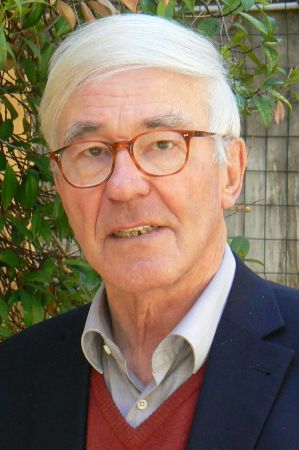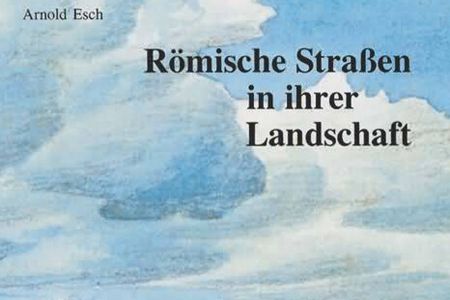Arnold Esch - Roman roads in their landscape
- Written by Portal Editor
The interested queries of some readers on the subject of "Roman roads" prompt us to the following summary of further information.
We would first like to thank Prof. Dr. Arnold Esch, who conducted extensive research on the Roman road system during his time as director of the German Historical Institute in Rome and published it in the following book:
"Roman roads in their landscape"

Arnold Esch (born April 28, 1936 in Altenbögge/Unna district, Westphalia) studied history, classical archeology and political science in Münster, Göttingen and Paris. In 1964 he received his doctorate with a thesis on "Boniface IX. and the Papal States". He then worked as an assistant in Göttingen. From 1970 to 1973 he worked as an assistant at the GHI. After his habilitation in 1974 in Göttingen with the work relationship between town and country using the example of the Tuscan city of Lucca, he taught there for a year as a private lecturer and spent another year as a research assistant at the GHI Rome.
Leaving for German Historical Institute in Rome
After a one-semester deputy chair at the Free University of Berlin, he became professor of medieval history at the University of Bern in 1977. He held his inaugural lecture in Bern on the importance of chances of transmission and chance of transmission for historical knowledge. In 1985/86 he was rector of the University of Bern. He gave his inaugural speech to the Bern rectorate about the university in the Middle Ages. In 1977 he became professor of medieval history at the University of Bern. From 1988 to 2001 he was director of the German Historical Institute in Rome.
At the beginning of his term of office, the institute celebrated its centenary on the Capitol in the presence of both presidents, in which the role of the institute as a mediator between German and Italian historical science was honored. In April 1991, on the occasion of the 100th anniversary of the death of Ferdinand Gregorovius, a conference was held with scientists from Germany, Italy and France. Esch published the conference proceedings in 1993 with Jens Petersen. At the end of October 1994, the GHI Rome held a conference organized by Esch and Norbert Kamp on the occasion of the 800th anniversary of Friedrich II. Esch dealt with Friedrich's conscious reception of ancient art and evaluated it as part of the imperial self-image and as a form of imperial self-portrayal. As director, he initiated the large edition of the "Repertorium Poenitentiariae Germanicum" using the opening of further Vatican archive funds. This work, compiled by Ludwig Schmugge, contains the petitions (supplices) addressed to the pope from the empire between 1431 and 1523.
Research on the Roman roads set new accents
As a Socio Straniero, Esch belongs to the Accademia dei Lincei. He is a corresponding member of the Academy of Sciences in Göttingen and the Bavarian Academy of Sciences. He is also a member of the German Archaeological Institute. Since 1989 he has been a corresponding member of the central management of the Monumenta Germaniae Historica. In 1996 Esch received the Karl Vossler Prize. In 2007 he was awarded the Lichtenberg Medal of the Göttingen Academy and in 2011 the Sigmund Freud Prize for scientific prose.
writings
- Between Antiquity and the Middle Ages. The Decay of the Roman Road System in Central Italy and the Via Amerina. C.H. Beck Verlag, Munich 2011, ISBN 978-3-406-62143-7.
- True stories from the Middle Ages. Little Destinies told in letters to the Pope. C.H. Beck Verlag, Munich 2010 ISBN 978-3-406-60133-0.
- Early Renaissance landscapes. On an excursion with Pius II. C. H. Beck, Munich 2008, ISBN 3-406-57038-0.
- Reuse of Antiquity in the Middle Ages. The Archaeologist's View and the Historian's View. Walter de Gruyter, Berlin/New York 2005, ISBN 3-11-018426-5.
literature
- Le story e la memoria. In honor of Arnold Esch and a cura of Roberto Delle Donne and Andrea Zorzi. Firenze, Reti Medievali - Firenze University Press, 2002 ISBN 88-8453-045-8 It is possible to download the entire volume or individual contributions
Source Wikipedia
Please read as well:
